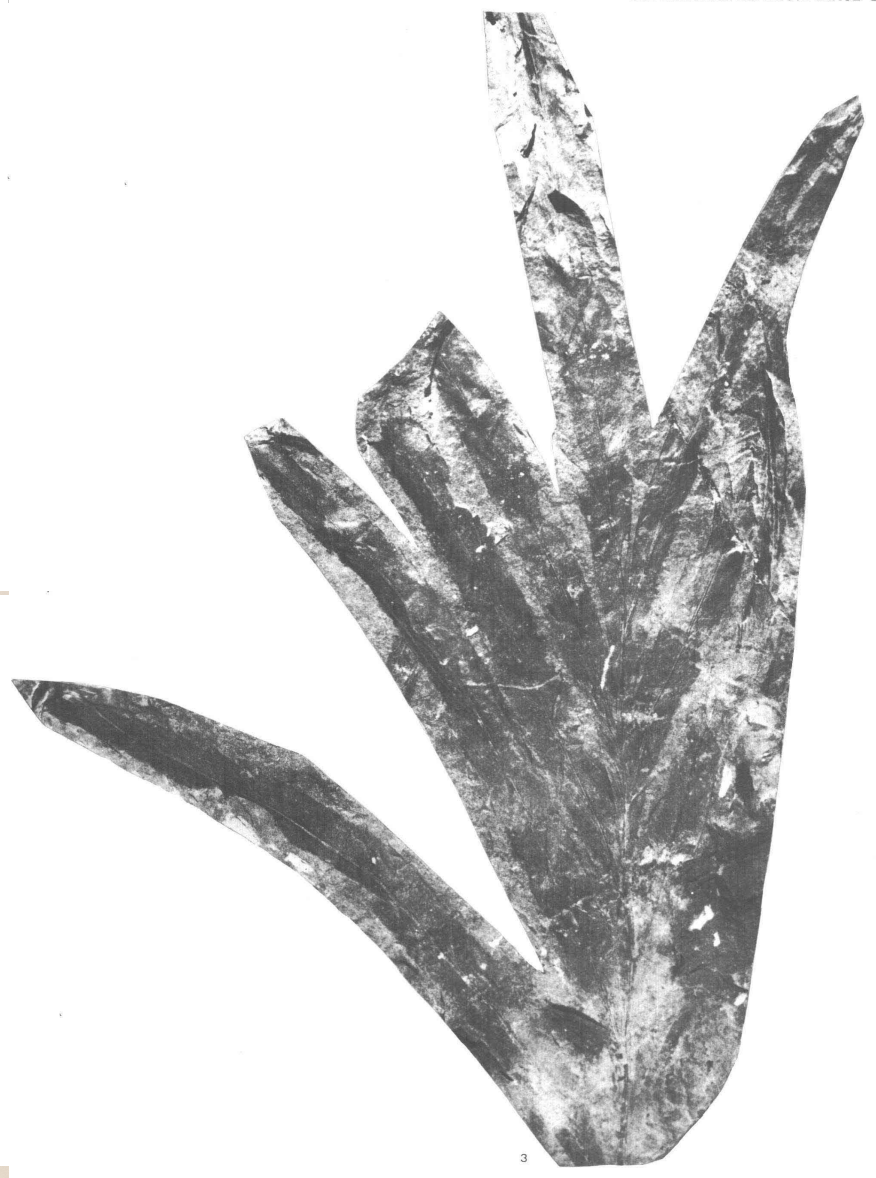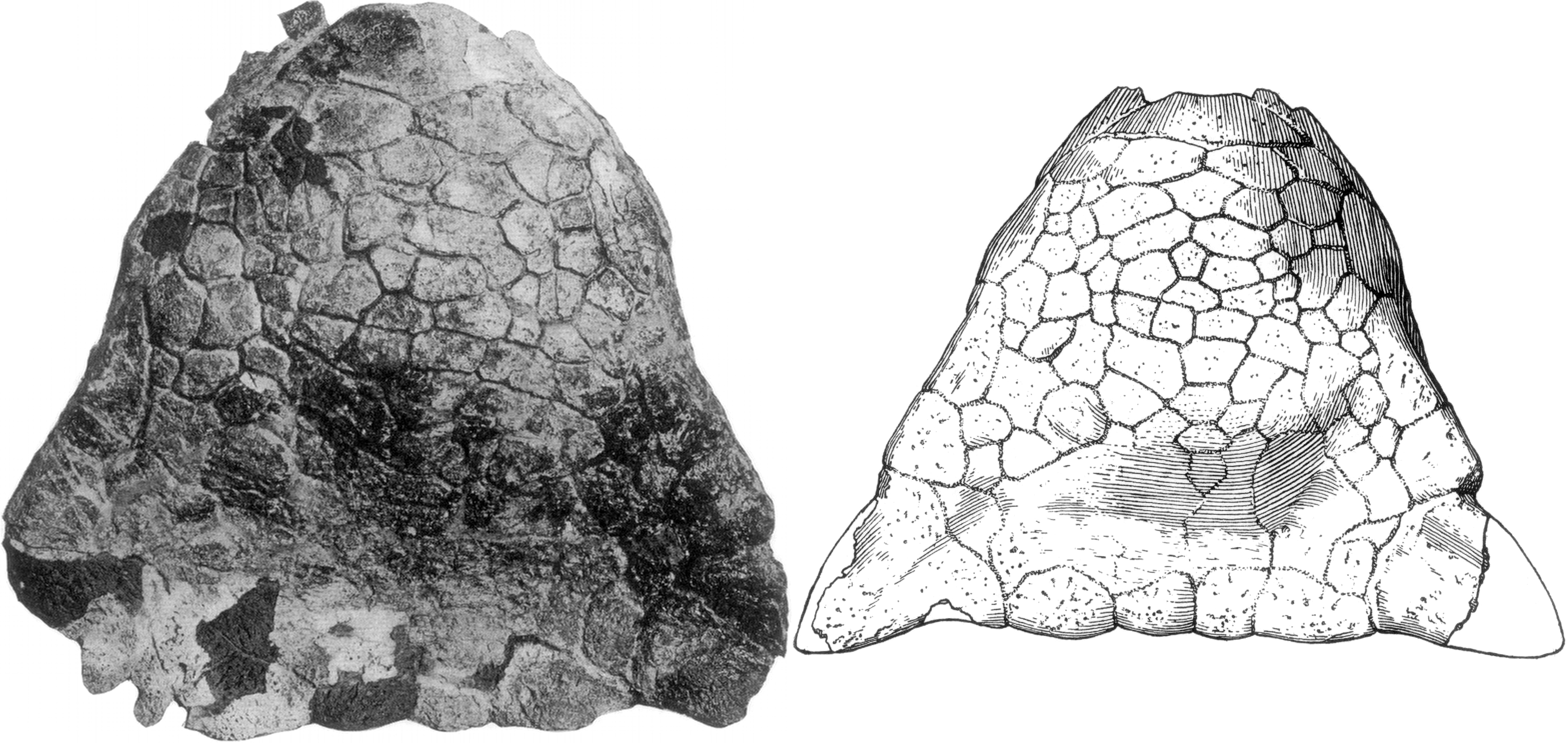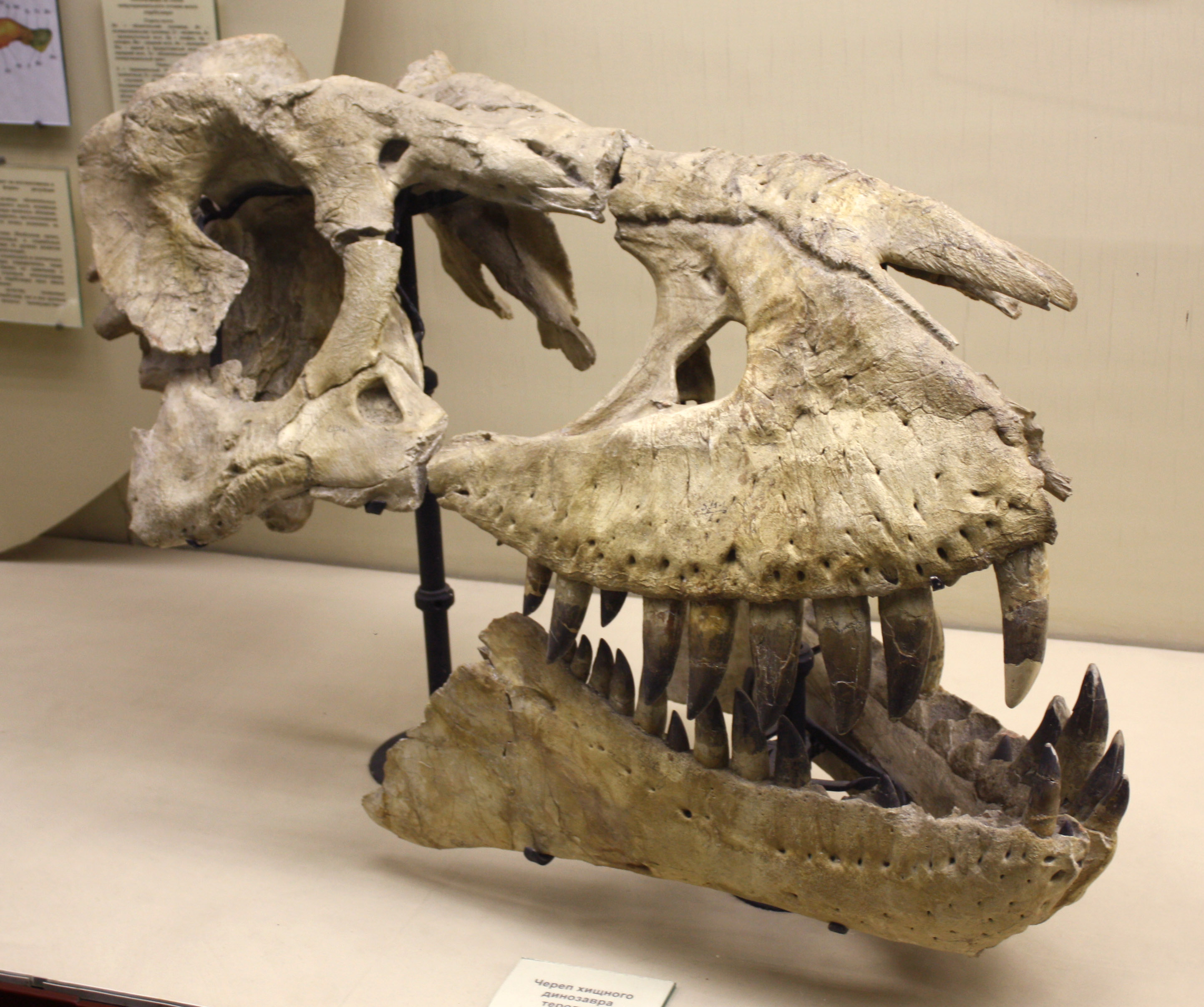|
Saichania
''Saichania'' (Mongolian meaning "beautiful one") is a genus of herbivorous ankylosaurid dinosaur from the Late Cretaceous period of Mongolia and China. The first fossils of ''Saichania'' were found in the early 1970s in Mongolia. In 1977 the type species ''Saichania chulsanensis'' was named. The description of this species has been based on limited fossil material; especially the rear of the animal is not well known. ''Saichania'' was more robustly built than other members of the Ankylosauridae, measuring in length and in body mass. Neck vertebrae, shoulder girdle, ribs and breast bones were fused or firmly connected. Its body was flat and low-slung, standing on four short legs. The forelimbs were very powerful. The head was protected by bulbous armour tiles. It could defend itself against predators like '' Tarbosaurus'' with a tail-club. On the torso keeled osteoderms were present. ''Saichania'' bit off plants in its desert habitat with a horny beak and processed them in i ... [...More Info...] [...Related Items...] OR: [Wikipedia] [Google] [Baidu] |
Tarchia
''Tarchia'' (meaning "brainy one") is a genus of herbivorous ankylosaurid dinosaur from the late Cretaceous of Mongolia. Discovery and naming In 1970, a Polish-Mongolian expedition discovered an ankylosaurian skull near Khulsan. In 1977, Teresa Maryańska named and described the type species ''Tarchia kielanae''. The generic name is derived from Mongolian тархи (''tarkhi'', "brain") and Latin ''~ia'', in reference to a brain size presumed larger than that of the related form '' Saichania''. The specific name honours Professor Zofia Kielan-Jaworowska, the leader of the expedition. The holotype, ZPal MgD-I/111, was discovered in the Upper Cretaceous (possibly Campanian-Maastrichtian) Barun Goyot Formation (previously known as the 'Lower Nemegt Beds') of the Nemegt Basin of Mongolia. It consists of a skull roof, braincase and rear skull elements. Maryańska referred three additional specimens: ZPAL MgDI/43, a large postcranial skeleton containing three "free" tail vert ... [...More Info...] [...Related Items...] OR: [Wikipedia] [Google] [Baidu] |
Tianzhenosaurus
''Tianzhenosaurus'' (meaning “Tianzhen lizard”) is a monospecific genus of ankylosaurid dinosaur from the Shanxi Province that lived during the Late Cretaceous (Cenomanian-Campanian, ~99-71 Ma) in what is now the Huiquanpu Formation. ''Tianzhenosaurus'' may represent a junior synonym of '' Saichania'', an ankylosaurine known from the Barun Goyot and Nemegt Formation. Discovery and naming In 1983, Pang Qiqing and Cheng Zhengwu discovered articulated cervical vertebrae of an ankylosaurid from the Shanxi Province. Numerous excavations at the site yielded more than 2,300 specimens belonging to sauropods, theropods, ornithopods and ankylosaurid specimens. The holotype specimen, HBV-10001, consists of a partial skull. Two paratype specimens were assigned to ''Tianzhenosaurus'': HBV-10002, an incomplete mandible; HBV-10003, cervical vertebrae, dorsal vertebrae, caudal vertebrae, a sacral complex, ilia, pectoral girdles, pelvic girdles, fore and hind limbs with fore and hind fe ... [...More Info...] [...Related Items...] OR: [Wikipedia] [Google] [Baidu] |
Ankylosauridae
Ankylosauridae () is a family of armored dinosaurs within Ankylosauria, and is the sister group to Nodosauridae. The oldest known Ankylosaurids date to around 122 million years ago and went extinct 66 million years ago during the Cretaceous–Paleogene extinction event. These animals were mainly herbivorous and were obligate quadrupeds, with leaf-shaped teeth and robust, scute-covered bodies. Ankylosaurids possess a distinctly domed and short snout, wedge-shaped osteoderms on their skull, scutes along their torso, and a tail club. Ankylosauridae is exclusively known from the northern hemisphere, with specimens found in western North America, Europe, and East Asia. The first discoveries within this family were of the genus ''Ankylosaurus'', by Peter Kaiser and Barnum Brown in Montana in 1906. Brown went on to name Ankylosauridae and the subfamily Ankylosaurinae in 1908. Anatomy Ankylosaurids are stout, solidly built, armoured dinosaurs. They possess accessory ossifications on ... [...More Info...] [...Related Items...] OR: [Wikipedia] [Google] [Baidu] |
1977 In Paleontology
Plants Ferns and fern allies Conifers Angiosperms Invertebrates Mollusks Conodonts Fish Archosauriformes Non-avian dinosaurs Data courtesy of George Olshevsky's dinosaur genera list. Birds Pterodactyls Expeditions, field work, and fossil discoveries * Trexler found hadrosaur remains west of Choteau, Montana in strata of the Two Medicine Formation. Popular culture Literature * ''The Year of the Dinosaur'' Edwin H. Colbert and illustrated by his wife, Margaret was published. This story describes a year in the life of a "brontosaur" and was an attempt to educate the reader about prehistory through a fictional portrayal of it. References {{Reflist, refs= {{cite book, last=Sarjeant , first=W. A. S. , year=2001 , chapter=Dinosaurs in fiction , title=Mesozoic Vertebrate Life , editor1-last=Tanke , editor1-first=D. H. , editor2-last=Carpenter , editor2-first= K. , publisher=Indiana University Press , pages=504–529 Paleontology Paleontology (), als ... [...More Info...] [...Related Items...] OR: [Wikipedia] [Google] [Baidu] |
Shanxia
Shanxia (named after the Shanxi Province) is a monospecific genus of ankylosaurid dinosaur from the Shanxi Province that lived during the Late Cretaceous (Cenomanian-Campanian, ~99-71 Ma) in what is now the Huiquanpu Formation. ''Shanxia'' may possibly represent a junior synonym of ''Tianzhenosaurus'', an ankylosaurine also known from the Huiquanpu Formation of China. Discovery and naming In 1993, Messrs. Lu and Li of the Hebei Geological Survey discovered a partial ankylosaurid skeleton at a locality in the Shanxi Province and notified staff of the Institute of Vertebrate Paleontology and Paleoanthropology, who collected the material later that year. The holotype specimen, IVPP V11276, consists of a braincase, occiput, skull roof, ?quadratojugal, axis vertebra, cervical vertebrae, dorsal vertebrae, caudal vertebrae, humerus, fragment of ?ilium, femora and an osteoderm. The holotype skull is partially reconstructed with plaster to stabilise parts of the skull roof and to attach ... [...More Info...] [...Related Items...] OR: [Wikipedia] [Google] [Baidu] |
Barun Goyot Formation
The Barun Goyot Formation (also known as Baruungoyot Formation or West Goyot Formation) is a geological formation dating to the Late Cretaceous Period. It is located within and is widely represented in the Gobi Desert Basin, in the Ömnögovi Province of Mongolia. Description It was previously known as the Lower Nemegt Beds occurring beneath the Nemegt Formation and above the Djadokhta Formation. It has been suggested that the Djadokhta and Barun Goyot Formations are lower and upper parts, respectively, of the same lithological unit and the boundary between the two does not exist. The stratotype of the Barun Goyot Formation is the Khulsan locality, east of Nemegt. At Nemegt, only the uppermost barungoyotian beds are visible. The ''Red Beds of Khermeen Tsav'' are also considered part of the Barun Goyot Formation. It is approximately in thickness,Gradzinski, R.; & Jerzykiewicz, T. (1974). Sedimentation of the Barun Goyot formation. Palaeontologica Polonica, 30, 111-146. and was ... [...More Info...] [...Related Items...] OR: [Wikipedia] [Google] [Baidu] |
Ankylosaurid
Ankylosauridae () is a family of armored dinosaurs within Ankylosauria, and is the sister group to Nodosauridae. The oldest known Ankylosaurids date to around 122 million years ago and went extinct 66 million years ago during the Cretaceous–Paleogene extinction event. These animals were mainly herbivorous and were obligate quadrupeds, with leaf-shaped teeth and robust, scute-covered bodies. Ankylosaurids possess a distinctly domed and short snout, wedge-shaped osteoderms on their skull, scutes along their torso, and a tail club. Ankylosauridae is exclusively known from the northern hemisphere, with specimens found in western North America, Europe, and East Asia. The first discoveries within this family were of the genus ''Ankylosaurus'', by Peter Kaiser and Barnum Brown in Montana in 1906. Brown went on to name Ankylosauridae and the subfamily Ankylosaurinae in 1908. Anatomy Ankylosaurids are stout, solidly built, armoured dinosaurs. They possess accessory ossifications on c ... [...More Info...] [...Related Items...] OR: [Wikipedia] [Google] [Baidu] |
Teresa Maryańska
Teresa Maryańska (1937 – 3 October 2019) was a Polish paleontologist who specialized in Mongolian dinosaurs, particularly pachycephalosaurians and ankylosaurians. Peter Dodson (1998 p. 9) states that in 1974 Maryanska together with Halszka Osmólska were among the first "women to describe new kinds of dinosaurs". She is considered not only as one of Poland's but also one of the world's leading experts on dinosaurs. A member of the 1964, 1965, 1970, and 1971 Polish–Mongolian expeditions to the Gobi Desert, she has described many finds from these rocks, often with Halszka Osmólska. Among the dinosaurs she has described are: * '' Saichania'' and '' Tarchia'' (1977) * with Osmólska, '' Homalocephale'', '' Prenocephale'', and '' Tylocephale'' (and Pachycephalosauria) (1974), '' Bagaceratops'' (1975), and '' Barsboldia'' (1981) * and with Osmόlska and Altangerel Perle, '' Goyocephale'' (1982). Alan Feduccia notes that Maryanska and her colleagues (Osmólska and Wolsan) ... [...More Info...] [...Related Items...] OR: [Wikipedia] [Google] [Baidu] |
Tarbosaurus
''Tarbosaurus'' ( ; meaning "alarming lizard") is a genus of tyrannosaurid dinosaur that flourished in Asia about 70 million years ago, at the end of the Late Cretaceous Period, considered to contain a single known species, ''Tarbosaurus bataar''. Fossils have been recovered from the Nemegt Formation of Mongolia, with more fragmentary remains found further afield in the Subashi Formation of China. Although many species have been named, modern paleontologists recognize only one, ''T. bataar'', as valid. Some experts see this species as an Asian representative of the North American genus '' Tyrannosaurus''; this would make the genus ''Tarbosaurus'' redundant. ''Tarbosaurus'' and ''Tyrannosaurus'', if not synonymous, are considered to be at least closely related genera. ''Alioramus'', also from Mongolia, has previously been thought by some authorities to be the closest relative of ''Tarbosaurus'', though this has since been disproven with the discovery of '' Qianzhousaurus ... [...More Info...] [...Related Items...] OR: [Wikipedia] [Google] [Baidu] |
Campanian
The Campanian is the fifth of six ages of the Late Cretaceous Epoch on the geologic timescale of the International Commission on Stratigraphy (ICS). In chronostratigraphy, it is the fifth of six stages in the Upper Cretaceous Series. Campanian spans the time from 83.6 (± 0.2) to 72.1 (± 0.2) million years ago. It is preceded by the Santonian and it is followed by the Maastrichtian. The Campanian was an age when a worldwide sea level rise covered many coastal areas. The morphology of some of these areas has been preserved: it is an unconformity beneath a cover of marine sedimentary rocks. Etymology The Campanian was introduced in scientific literature by Henri Coquand in 1857. It is named after the French village of Champagne in the department of Charente-Maritime. The original type locality was a series of outcrop near the village of Aubeterre-sur-Dronne in the same region. Definition The base of the Campanian Stage is defined as a place in the stratigraphic colu ... [...More Info...] [...Related Items...] OR: [Wikipedia] [Google] [Baidu] |
Anatomical Terms Of Location
Standard anatomical terms of location are used to unambiguously describe the anatomy of animals, including humans. The terms, typically derived from Latin or Greek roots, describe something in its standard anatomical position. This position provides a definition of what is at the front ("anterior"), behind ("posterior") and so on. As part of defining and describing terms, the body is described through the use of anatomical planes and anatomical axes. The meaning of terms that are used can change depending on whether an organism is bipedal or quadrupedal. Additionally, for some animals such as invertebrates, some terms may not have any meaning at all; for example, an animal that is radially symmetrical will have no anterior surface, but can still have a description that a part is close to the middle ("proximal") or further from the middle ("distal"). International organisations have determined vocabularies that are often used as standard vocabularies for subdisciplines of ana ... [...More Info...] [...Related Items...] OR: [Wikipedia] [Google] [Baidu] |
Late Cretaceous
The Late Cretaceous (100.5–66 Ma) is the younger of two epochs into which the Cretaceous Period is divided in the geologic time scale. Rock strata from this epoch form the Upper Cretaceous Series. The Cretaceous is named after ''creta'', the Latin word for the white limestone known as chalk. The chalk of northern France and the white cliffs of south-eastern England date from the Cretaceous Period. Climate During the Late Cretaceous, the climate was warmer than present, although throughout the period a cooling trend is evident. The tropics became restricted to equatorial regions and northern latitudes experienced markedly more seasonal climatic conditions. Geography Due to plate tectonics, the Americas were gradually moving westward, causing the Atlantic Ocean to expand. The Western Interior Seaway divided North America into eastern and western halves; Appalachia and Laramidia. India maintained a northward course towards Asia. In the Southern Hemisphere, Australia an ... [...More Info...] [...Related Items...] OR: [Wikipedia] [Google] [Baidu] |






